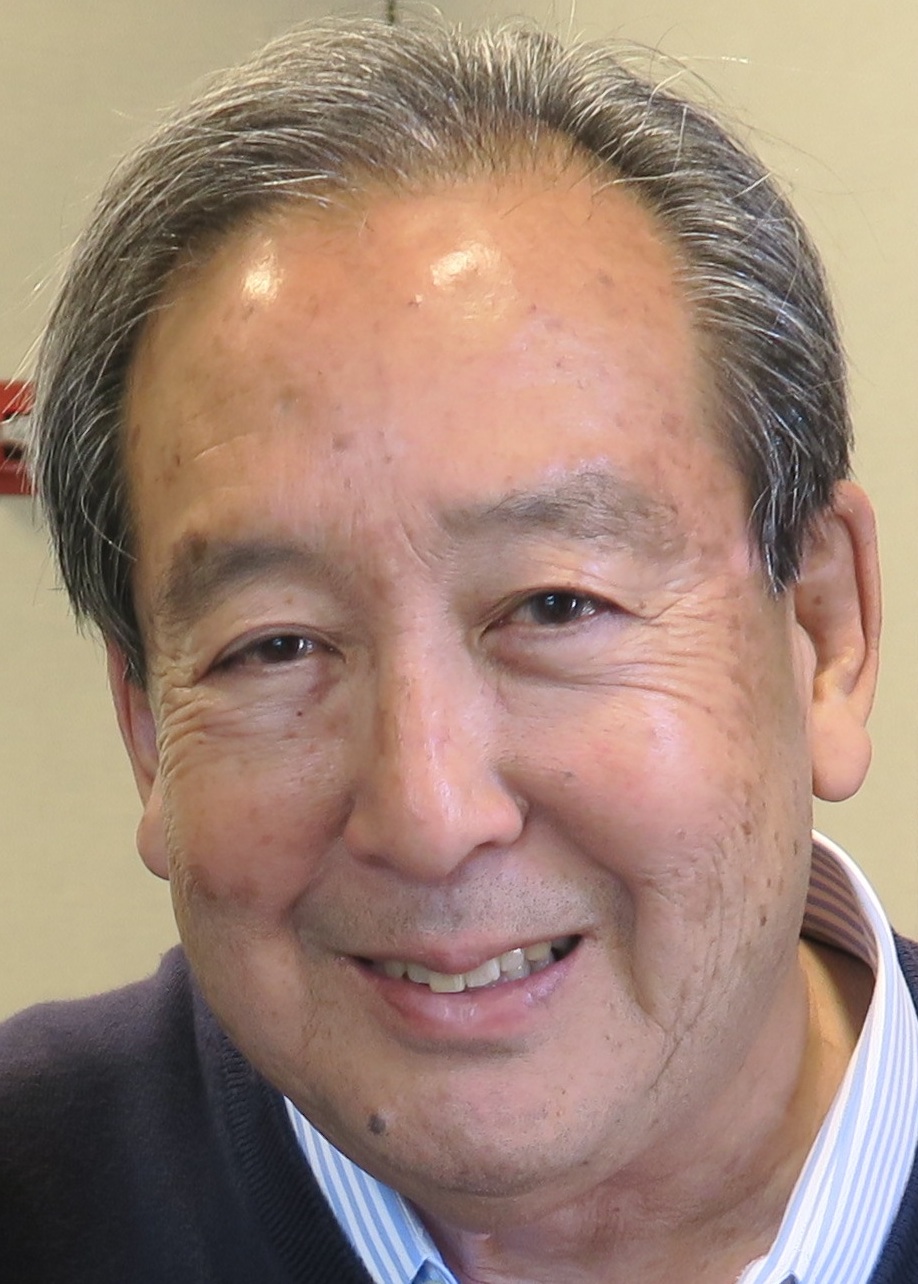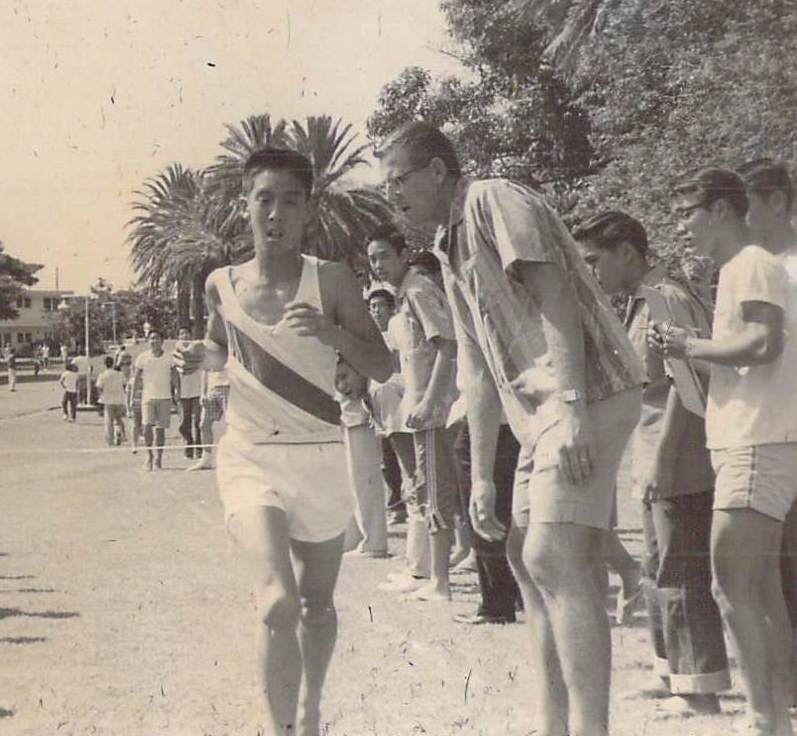
My Ace: Mid-Pacific Memories
By Sam Yamashita ’64
Sam Yamashita ’64 is a professor of Asian Studies at Pomona College. His generous planned gift will be dedicated to providing financial aid assistance to Mid-Pacific students. For more information on Mid-Pacific Planned Giving, contact Vice President of Institutional Advancement Shannon Cleary at [email protected].
The next award goes to Sam Yamashita, my ace.” This was all Carl Wheeler, the cross-country and track coach, said. I remember standing up and walking to the front of Bakken Auditorium to receive the award. The rest is a blur. I had never been described in that way. Ever. I had been running for only a year and a half.
I had grown up playing baseball. As soon as I could walk, I was given a baseball glove and ball, and I began to throw and catch; and a bat followed, and I began to hit. When I was eight, little league baseball came to our town. Tryouts were held at a park in Bishop Tract, a fancy section of town a few blocks from the white sand and surf of Kailua Beach—where President Obama spent his vacations. I remember standing in a long line with the other hopefuls, waiting for my turn to hit. My turn came, and with a dozen coaches watching, I stepped up to the plate to do what I had been raised to do. I don’t remember who was pitching—no doubt one of the fathers or perhaps a would-be coach—but I do recall that I popped up to shallow left field. It was my first public at bat.
Since I was too young to play in the majors, I sat out for a year. The following year I was picked to play for the Red Legs and played for them for three years. I started out in the outfield, then was moved to first base and catcher. I think I was a steady and smart ballplayer: I could make good contact, could bunt when necessary, and was fast enough to steal second. Baseball was the center of my life. During the season the day was divided into classes and then practice. I carried my glove, cap and spikes in an airline bag. The diamonds where we practiced and played our games were in Kailua Park, a large field right that sat between Kailua Elementary School and the high school. When I think back to those years, it seems that most of my free time was spent at that park because in the off season I played on the same diamonds with classmates during recess.
Baseball was the center of my life. My father had played serious baseball: he had been a standout at St. Louis High School in Honolulu and then played for the Asahi team in the Hawaii Major League. After he stopped playing, he became a professional umpire. He had a day job but officiated at ball games all over the island on weekends. Maybe this is why baseball was taken so seriously in my family. In fact, I was even allowed to transfer from the public middle school in my hometown to Mid-Pacific Institute to play baseball. My father knew the coach. I had been to high school games played at Honolulu Stadium and had seen boys I knew from my hometown playing for MPI at the stadium. I dreamed of doing the same someday.
But I was small for my age. In my first year at MPI, I was 4’11” and 110 lbs. and outfielders always moved in when I stepped into the batter’s box. I knew the game well, really well, but wasn’t strong enough to hit the ball to the deepest part of the outfield or to throw hard and long enough from the outfield. Early in my first season, I decided to quit the team. I called home and talked to my mother. “I’ve decided to quit the team” was all I said. Neither she nor my father insisted that I stay on the team. Many years later, my father said his friends from his ballplaying days whose sons were at Mid-Pacific commented on my baseball skills. “Hide,” they would say, “why can’t your son hit?” And a few years before my father died, he confessed that what they actually said was “Hide, has your son ever played organized baseball?” Dad was kind enough not to tell me the truth.
I will never forget the dual cross-country meet at home against Punahou in my junior year. It was on our home course, and it had a complicated layout. In fact, I’m surprised that it was acceptable to other teams. It started just inside the entrance to the school and ran mauka along the stately, palm-lined drive that ran up to and around Old Kawaiaha‘o, which stood solidly on a foundation made of shaped black lava rocks and was one of the oldest buildings on campus; down to and around what is now the Girls Softball Field; then on to a stretch of sidewalk on the ground floor of the Girls Dorm and alongside one of the academic buildings; down to and around the Metal Shop; then up twenty-four concrete steps to the baseball field, around the field and back to the entrance of the school and the finish line.
When I mount the last of the concrete steps, I am in first place, and the runners behind me are just beginning to come up the steps. Chris Kitaoka and other classmates are waiting at the top of the stairs, and they shout at me as I make my way up the steps.
“You’re in first and way ahead. Don’t let up.”
Their words remind me that I still had to go around the baseball field. I start at the top of left field, move along the edge of center and right field, down the first base line. I pass home plate and run along the third base line, turning left where the infield became the outfield. I make a beeline to the corner of B Dorm and turn hard left. It is just two hundred yards to the finish. Chris, who was well over six feet and gangly, runs alongside me in his flip flops to the final fifty yards, shouting encouragement.
Someone took a picture of me breaking the tape. I have a strange look on my face, one I don’t recognize. I am somewhere else.
I was first.
The following year, our dual meet with Punahou was on their campus, and as luck would have it, I placed first again.
I had never been first in anything, ever.

